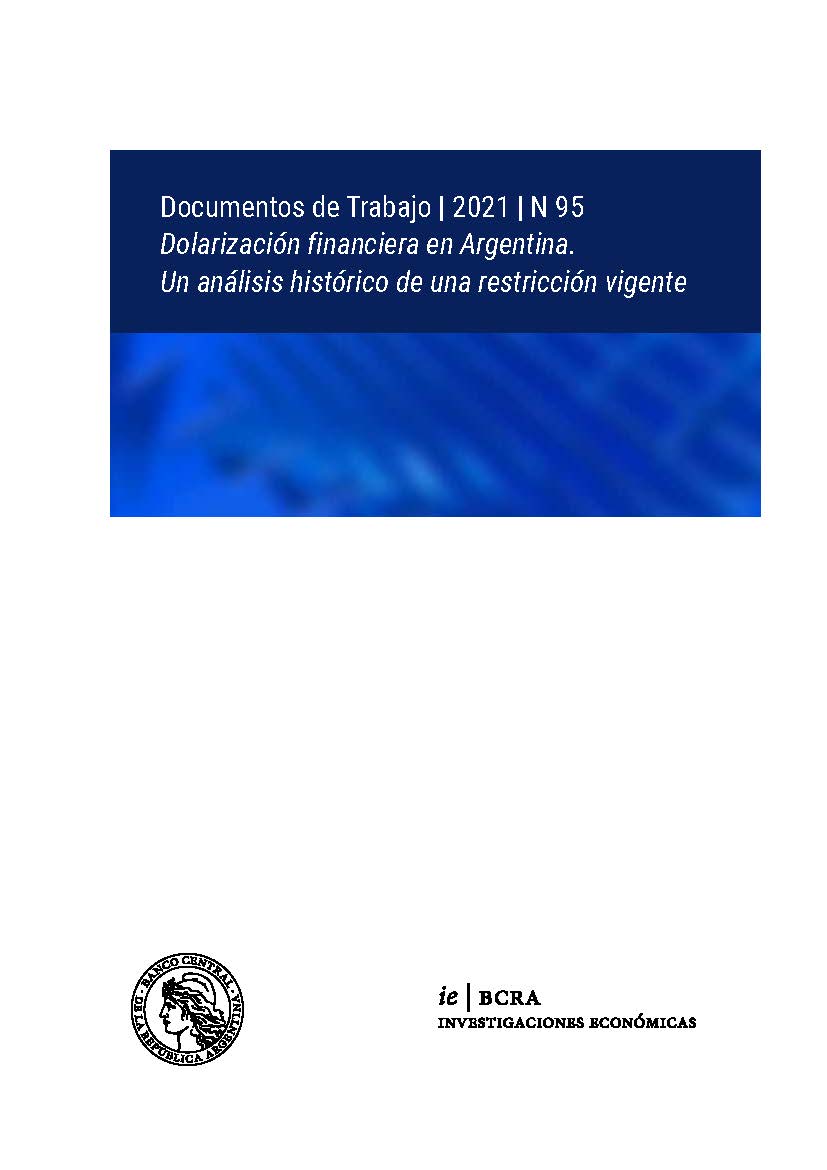Financial dollarization in Argentina. A historical analysis of a current restriction
Working papers | 2022 | N 95
Keywords:
Dollarization, Asset replacement, Financial intermediationAbstract
The dollarization of the reserve assets of families and firms has characterized the evolution of savings patterns in Argentina for more than half a century. Behind this process lies the deterioration of the role of reserve of value experienced by the local currency. In this work, we will ask ourselves what have been the main determinants of our monetary and exchange history on the savings decisions of families and firms. To answer this question, we will begin by analyzing the evolution of the real returns of the main store of value assets of the private sector over almost eighty years of history. Understanding the effects of the various monetary and exchange environments on the evolution of real returns constitutes a central element of the analysis, since it provides us with an important starting point to understand the replacement of reserves of value denominated in local currency with assets denominated in dollars, as well as real estate assets, the latter as a non-financial reserve of value option. From a methodological perspective, based on the evolution of ex-post real returns, we will use optimal portfolio selection approaches under alternative preference schemes in order to rationalize the demands for value reserves of the non-financial private sector, with a view to our history. The main contribution of the work is to use portfolio theory to show that the process of dollarization of value reserves observed in Argentina for more than fifty years constitutes an adaptive response on the part of families and firms exposed to environments recurrently conditioned by events. disruptive exchange rates and persistent inflationary processes.
JEL classification: F41, F31, G11


